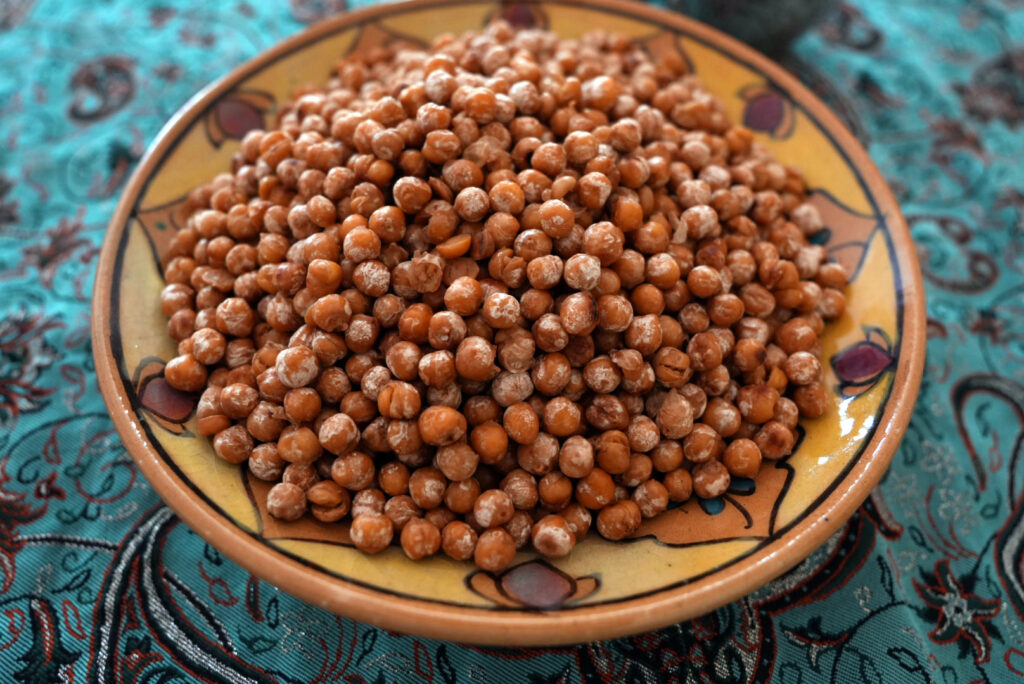What is probably the oldest reference to this snack can be found in a recipe for toasted wheat called qāwūt (قاووت) — a word related to an Arabic root meaning ‘to nourish, feed’, with qūt (قوت) and quwāt (قوات) denoting ‘food’ — in treatises from Mamluk Egypt, including The Sultan’s Feast. The recipe mentions taking the wheat to the chickpea roaster to perform the required task, thus revealing that it was already a popular streetfood even then, as it still is today in many countries.
The recipe mentions the name these crunchy roast chickpeas still have, i.e. qadāma (قضامة), which actually denotes anything that is nibbled, from a verb, qadima (قضم), ‘to nibble or bite on something dry’. Interestingly enough, one of the other meanings of the verb is ‘to have black and broken teeth’ — presumably, due to over-nibbling on snacks!
The chickpeas are soaked, boiled and then roasted over a gentle fire. For this recipe, I just added salt, but today a number of other spices are also used. In Turkey, it is known as leblebi, but, confusingly, in some Arab countries (especially Tunisia) lablabi (لبلابي) denotes a chickpea soup, a popular streetfood.

